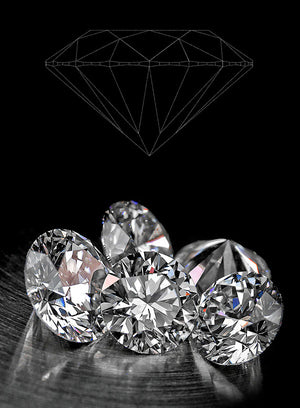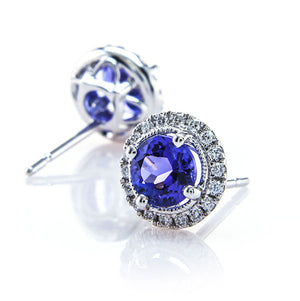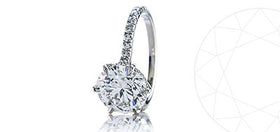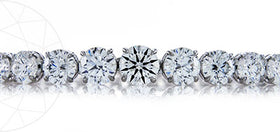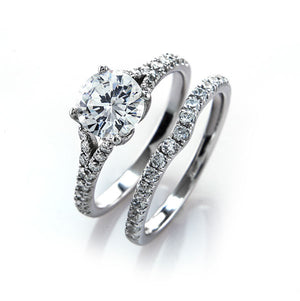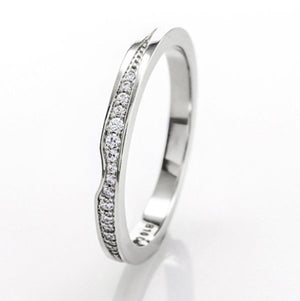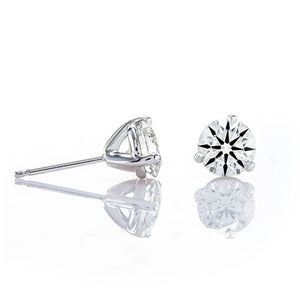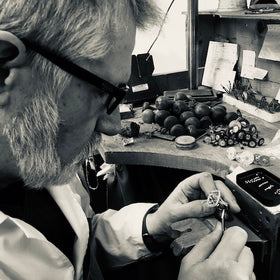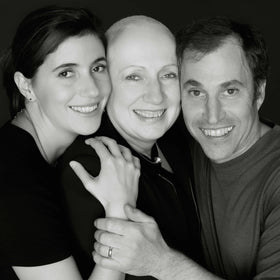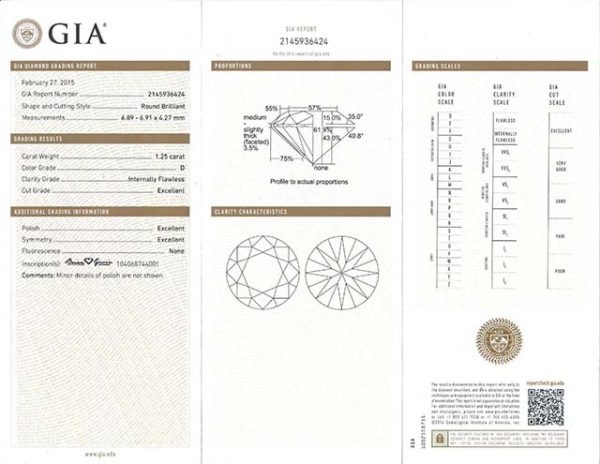
What is the GIA?
What is the GIA?
"Can you tell me what the GIA is? I understand that they're a gemological laboratory, but it seems to be more than that. I keep running into references to the GIA while diamond shopping that makes them seem like an authority."
"It also seems like the GIA trains people to be gemologists. But do they also conduct research and act as a governing body within the industry? If that is the case, why aren't Brian Gavin Signature diamonds GIA Certified?"
"All of the BGD Signature diamonds that I am considering appear to be graded by the AGS Laboratory. How does the AGS compare to the GIA? In other words, what are the differences between the AGS and the GIA in terms of accuracy?"
What Does GIA Stand For?
The Gemological Institute of America Gem Trade Laboratory is a leading authority in the diamond industry. The acronym "GIA" is a commonly used abbreviation for GIA-GTL.
Similarly, people tend to refer to the AGS instead of the AGSL or American Gem Society Laboratory. Consequently, both organizations began under the stewardship of Robert M. Shipley during the 1950s.
Shipley was a veteran of the diamond and jewelry industry with a vision to create a uniform system of ethical grading. That inspiration led to the 4Cs grading standards that we use today to describe:
- Carat Weight.
- Color
- Clarity
- Cut
What Do the Letters Mean that Describe Diamonds?
People in the industry describe factors of quality using abbreviations for the classifications outlined above. So, for example, we'll say that a diamond is VVS2 instead of Very, Very Slightly Included in the Second Degree.
Likewise, we'll say that a diamond is D-color instead of Colorless. Similarly, we describe diamond carat weight in points or fractions of carat weight. These practices make it faster and easier for diamond dealers to trade diamonds globally.
Consequently, none of this would be possible without realizing Shipley's dream to create a uniform grading system. Before the implementation of the GIA Grading Scale, everybody was using terms that lead to confusion.
In contrast, a diamond cutter in Antwerp can use GIA Grading Terminology to describe a diamond to a dealer in NYC with perfect clarity. Pun intended. Only a little bit of knowledge is necessary to break the code.
What Is the GIA Grading Scale?
As stated previously, the GIA grading scale enables people to trade diamonds globally using standard definitions for carat weight, clarity, color, and cut quality.
Diamond carat weight is pretty straightforward, with 100 parts (or points) equaling 1.00 carats. Under those circumstances, you would describe a three-quarter carat diamond as 0.75 carats. In the same manner, a 1.50 carat diamond is one and one-half carats.
Shipley decided to begin the diamond color scale at D-color instead of using A-B-C because some jewelers were already using those letters to describe higher color grades. In that case, the GIA Color Scale for white diamonds begins with D-color as the highest and goes down to Z-color.
The GIA Diamond Clarity Scale:
It's a little-known fact that we grade diamonds for an absence of inclusions instead of the presence of clarity characteristics. For that reason, the GIA clarity scale runs from highest to lowest clarity as follows:
- Flawless.
- Internally Flawless.
- Very, Very Slightly Included 1st Degree (VVS1).
- Very, Very Slightly Included 2nd Degree (VVS2).
- Very Slightly Included 1st Degree (VS1).
- Very Slightly Included 2nd Degree (VS2).
- Slightly Included 1st Degree (SI1).
- Slightly Included 2nd Degree (SI2).
- Included 1st Degree (I1).
- Included 2nd Degree (I2).
- Included 3rd Degree (I3).
Consequently, most other gemological laboratories use the GIA grading scale as the foundation of their systems. Arguably, that is because the GIA is most widely recognized since they were the first laboratory.
For example, the AGS Laboratory relies upon a numerical score for the factor above and provides a cross-reference to the equivalent grade on the GIA clarity scale.
Diamond Speak, Is It All Greek?
Listening to a jeweler describe a diamonds' characteristics using the language of the GIA can sound like a lot of psycho-babble. That's because industry jargon is specific to the field of application and not necessarily meant for outsiders.
Although that is true, it doesn't mean a quick study like you can't learn to speak our language quickly. You simply need to break down the code and translate it into English.
Imagine that you're looking for sparkly, a one-carat diamond that is bright white with no visible inclusions. You say that to your local jeweler, and they respond with: "Here's a four-grainer, D, VS-2, triple zero ideal-cut."
Most people are going to respond with something like, err, and what about the flaws? The diamond dealer might say something like: "There's a pique under the table and a feather at the edge of the table and star facets."
English Translation:
"The AGS Laboratory grades this 1.00 carat diamond as D-color, Very Slightly Included in the second degree. The inclusions are very slight and consist of a small black crystal under the table facet and a minor fracture under the triangular star facet."
They also told you that the diamond is 'Ideal Cut' but did not mention the grading platform. Consequently, herein lies one of the essential differences between the GIA vs. AGS laboratories.
The GIA Excellent cut rating is proportions-based which means that the measurements dictate the overall cut grade. In contrast, the AGS relies upon Light Performance and proportions as deciding factors.
The Angular Spectrum Evaluation Tool (ASET) is proprietary to the AGSL, and the GIA has nothing like it. Consequently, we rely on AGS grading for Brian Gavin Signature diamonds because of the valuable insight that the Light Performance Diamond Quality Document (DQD) provides.
Is GIA Excellent Good Enough?
In our experience, most people group broad performance classifications when diamond shopping. In other words, they make the mistake of assuming that a diamond performs well because it has an overall grade of AGS Ideal or GIA Excellent.
Unfortunately, that is not necessarily the case because each grade represents a broad spectrum of possibilities. For example, the GIA Excellent grade encompasses a wide range of proportions.
As with every range or spectrum, there is a low-end, a mid-range, and a high-side. Consequently, the proportions that we aim for are in the middle of the spectrum, commonly known as ideal cut.
In other words, the sweet spot for performance lies in the middle of the range and not the outer edges. It is also essential to realize the differences in how the labs measure diamonds and present the information.
GIA vs. AGS Proportions Grading Standards:
It's a little-known fact that the AGS and GIA measure diamond proportions using different techniques. Similarly, the GIA rounds off several critical measurements rather than reporting the average.
Consequently, both laboratories take eight measurements per facet section. Then, they add those measurements together and divide the sum by eight to get the average.
The AGS publishes the average measurements on the diamond quality document. In contrast, the GIA rounds several measurements off to the nearest half a degree, half a percent, and as much as five percent in some cases.
The Practice of Rounding Proportions is Confusing:
For example, the GIA will round a 34.3 degree crown angle off to 34.5 degrees on the lab report. In contrast, they'll round off a 34.7 degree crown angle down to 34.5 degrees.
In that case, it might not be so bad since the average lies in the middle of the sweet spot we recommend. However, the same practice can have grave consequences with steeper crown/pavilion measurements.
The reason is that the crown section dictates the balance of brilliance and dispersion. In other words, the ratio of white sparkle and colored flashes. Similarly, the pavilion angle dictates the volume of light return.
Slight differences in crown/pavilion measurements can have dramatic effects on light performance. Even the slightest variation outside the target range is likely to impact the sparkle factor negatively.
Is the Range of Proportions for GIA Excellent Too Big?
Another reason why we prefer the AGS Laboratory is because they rely upon a more precise range of proportions. In other words, the specifications for the AGS Ideal cut rating are tighter than GIA Excellent cut.
For example, one of our clients recently asked about a diamond with the following characteristics:
- Round Brilliant Cut Diamond.
- 01 carats.
- Measurements: 6.33 – 6.36 x 4.04 mm.
- 7% total depth.
- 55% table diameter.
- 5 crown angle.
- 16% crown height.
- 41-degree pavilion angle.
- 5% pavilion depth.
Consequently, the inquiry came from a satisfied client trying to help a friend shop for diamonds online. A local jeweler suggested this diamond which is not lab-graded.
The proportions were determined using Sarine analysis, and the jeweler used GIA Facetware® as the basis to estimate the cut grade. As that may be, we see some distinct differences in the data compilation.
First, there is not a data field for total depth in the GIA Facetware application. In that case, the total depth measurement does not appear to be an essential factor of the overall cut grade.
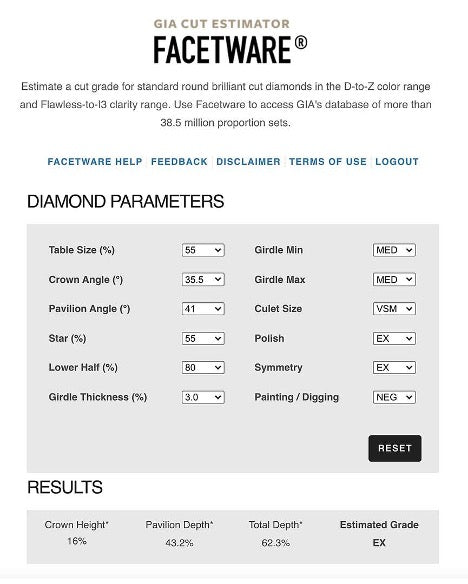
The Effect of Total Depth on Light Performance:
As shown above, in the lower right corner, GIA Facetware estimates the overall cut grade of this diamond to be excellent. However, that does not guarantee that the diamond is a top performer.
Although the total depth measurement does not influence the overall cut grade, it does affect a diamonds' appearance. First, the crown/pavilion angle offset is not conducive to exceptional light return.
Second, the carat weight hidden in those sections results in an average outside diameter of 6.345 mm, which is small for a 1-carat round diamond. To put things into perspective, the average outside diameter of a Brian Gavin Signature round 1-carat diamond is closer to 6.5 mm.
Under those circumstances, you could end up paying a premium for a one-carat diamond that looks small for its size. In addition, the diamond might be GIA Excellent on their proportions-based grading system. However, it might not fare so well on the AGS Light performance grading scale.
How the GIA Could provide better peace of mind:
First, we want to state clearly that our experience with the GIA Gem Trade Laboratory has mostly been excellent. We find their standards accurate for common factors of diamond grading.
Sadly, we feel that how they grade cut quality falls short compared to the AGS Laboratory. That is due in part to how they round off the measurements and the lack of light performance evaluation.
Under those circumstances, there is room for the GIA to improve its grading standards. For example, they could start reporting the average measurements and stop rounding them off.
The research division of the GIA could also develop an angular spectrum-based method of measuring light performance. In doing so, they would close the gap that exists between themselves and the AGS Laboratory.
Regardless of that fact, we already provide ASET Scope images for Black by Brian Gavin and Signature diamonds. We also publish the Hearts and Arrows Scope images necessary to judge the degree of optical precision.
The Formula for Spectacular Sparkle Factor:
The secret to creating exceptional light performance is to combine the right proportions with exacting optical precision. That is the consistency of facet shape, size, and alignment from the perspective of 360-degrees.
Brian Gavin is a fifth-generation diamond cutter with a passion for creating diamonds that exhibit incredible light performance. Throughout the years, he has fine-tuned the process of cutting diamonds for maximum performance.
Brian Gavin is the only cutter with a patent for maximizing light performance in the modern round brilliant cut diamond. The patent covers a specific range of proportions and how we polish the diamonds to create more sparkle.
In that case, it's fair to say that nobody cuts diamonds like Brian Gavin. It also explains our preference for the AGS vs. GIA because their light performance-based grading platform enables you to make an informed decision.





